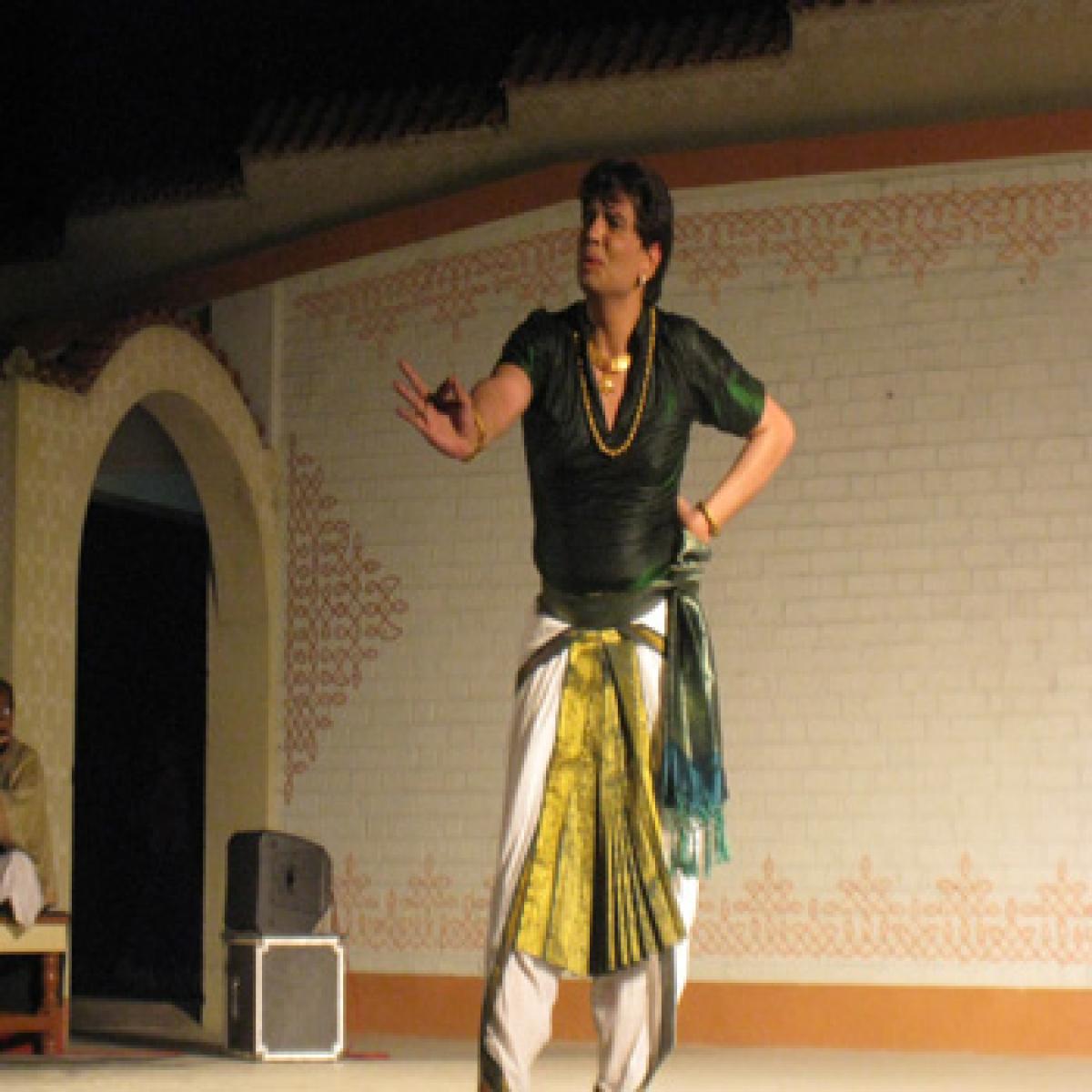Live
- 2024 on track to be hottest year on record
- PM Modi’s visit to Solapur: Women applaud ‘Double-Engine’ government’s initiatives
- Nagarkurnool MLA Dr. Kuchukulla Rajesh Reddy Campaigning in Maharashtra Elections
- Wife Kills Husband with Her Lover: Details of Veldanda Murder Case Revealed by SP Gaikwad
- Strict Action on Violations of Food Rights: Telangana Food Commission Chairman Goli Srinivas Reddy
- Smooth Conduct of Group-3 Exams with Strict Security Measures: Collector Badavath Santosh
- Delhi HC orders cancellation of LOC issued against Ashneer Grover, wife
- Shami’s absence a major blow for India in BGT, says Paul Adams
- Will organize protests at borders if attack on minority Hindus in Bangladesh not stopped: Bengal LoP
- Dutch Ambassador Marisa Gerard Meets Telangana CM A. Revanth Reddy in Delhi
Just In

As part of the one year anniversary celebrations of ‘Hema Arangam’, there were two notable Bharatanatyam performances by Aniruddha Knight and Vidhya Subramanium at CCRT. Since both the artistes are quite well-known, there was no way one could afford to miss their programme, and this was evident as the traffic was at its worst in Hyderabad on the day.
The notable performances by Aniruddha Knight and Vidhya Subramanium at ‘Hema Arangam’ were rich with fine abhinaya and improvised nuances in both music and dance
As part of the one year anniversary celebrations of ‘Hema Arangam’, there were two notable Bharatanatyam performances by Aniruddha Knight and Vidhya Subramanium at CCRT. Since both the artistes are quite well-known, there was no way one could afford to miss their programme, and this was evident as the traffic was at its worst in Hyderabad on the day.
‘Hema Arangam – The Golden Platform’, an institution founded by a young Bharatanatyam danseuse Kiranmayee Madupu, makes classical arts more accessible to the current generation, conducts unique events, and runs an art school where classical dance and music are taught.
Aniruddha Knight, the proud inheritor of “Balamma’s legacy” presented ‘Reminiscing Bala’, a production dedicated to his dear departed grandmother T Balasaraswati. Being the first male dancer in nine generations of one of India’s greatest artistic families that produced Vina Dhanammal and legendary Bala, he is the only grandson of the one and only Balasaraswati, the erstwhile queen of abhinaya.
Aniruddha carries forward her pristine style and presentation while his father Douglas Knight provides cadence and support (he also authored a book, ‘Balasaraswati – Her Art and Life’). Dressed in an interesting costume – an attractive green fan over white “panche”, paired with a rich green silk longish sleeved banian/ blouse, sporting elegant jewellery, Aniruddha opened his dance with a Khanda Alaripu that had the text of Thiruppugazh.
In their “sampradayam”, to start the kutcheri with just “chollu” is not done, hence Balamma’s teachers, the great nattuvannars included some text, in praise of lord Murugan. Another noteworthy point is, in their ‘adavus’, one can hear only the sound of “gajjelu-selangai”, but not the sound of stamping of the feet; the dance moves too do not have any jerks as they are soft and sinuous, appropriating to the feminine movements.
Sticking to this tradition, Aniruddha presented Tanjore Quartet’s beautiful varnam in Kalyani in praise of Mannargudi Rajagopalaswamy, where the lotus-eyed nayika describes the “leelas” of the presiding deity. The rich music is followed by improvised ‘sancharis’ as, again in their sampradayam, stress is laid on “manodharma” (except for the already set jathis). It was the confluence of music and dance, where the nuances of music were reflected in his dance.
“Mosamaaye” (which means “I was cheated”), a padam in Ahiri; and “Neelamyil vaahagano” in Neelambari (in praise of lord Muruga) followed. The concluding javali, “Maharajuga rammanave” (which means “he is most welcome to come”) in Behag didn’t seem much different from the two earlier padams, either in the pace or in performance. It was evident that Aniruddha is very proud of his lineage and draws his inspiration from thence.
The other performance was by Vidhya Subramanium, an internationally acclaimed Bharatanatyam exponent from San Francisco, USA, trained under the Vazhuvoor style presented “Vinimaya”, blending Shringara and Bhakti. Endowed with good looks, grace and supreme confidence, she started with Patanjali’s Nataraja Stuthi, where her firm grip over the dance form was established.
With perfect nritta and fine abhinaya, she proceeded to the next number, a varnam in ragamalika, “Swamiye azhai thodi vaa”. The much celebrated padam “Indendu vachithivi raa...” in Suruti, though given apt treatment, one expected a more superior abhinaya from an experienced artiste like Vidhya. Annamacharya’s “Jo Achuthananda” was also executed.
However, a bit of attention for the right pronunciation would have added to the pleasure of listening. The concluding “Jaya Durge” was vibrant and awe-inspiring, and the energetic music added much verve to the recital.

© 2024 Hyderabad Media House Limited/The Hans India. All rights reserved. Powered by hocalwire.com







